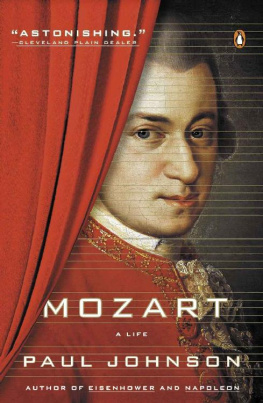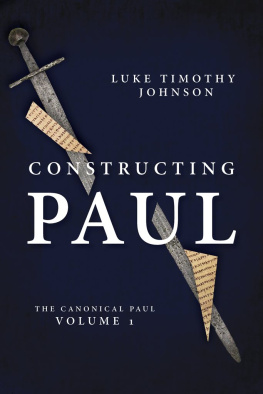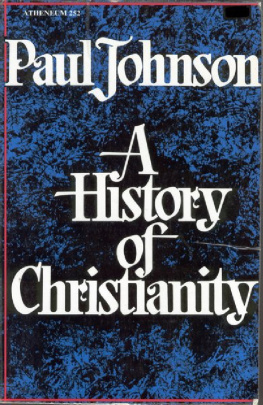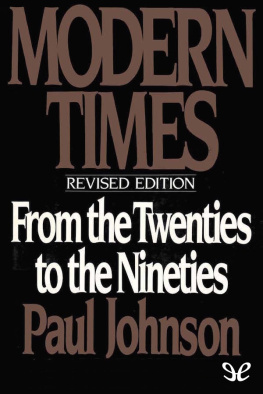I N 1988 I PUBLISHED A BOOK called Intellectuals . It surveyed the genre and provided essays on a dozen examples. It was a critical book whose unifying theme was the discrepancy between the ideals professed by intellectuals and their actual behavior in their public and private lives. I defined an intellectual as someone who thinks ideas are more important than people. The book was well received and was translated into a score of languages. But some reviewers found it mean-spirited, concentrating on the darker side of clever, talented individuals. Why had I not more to say about the creative and heroic sides of the elite? Therein lies the genesis of this work, Creators , dealing with men and women of outstanding originality. If I live, I hope to complete the trilogy with Heroes , a book about those who have enriched history by careers or acts of conspicuous courage and leadership.
Creativity, I believe, is inherent in all of us. We are the progeny of almighty God. God is defined in many ways: all-powerful, all-wise, and all-seeing; everlasting; the lawgiver; the ultimate source of love, beauty, justice, and happiness. Most of all, he is the creator. He created the universe, and those who inhabit it; and, in creating us, he made us in his own image, so that his personality and capacities, however feebly, are reflected in our minds, bodies, and immortal spirits. So we are, by our nature, creators as well. All of us can, and most of us do, create in one way or another. We are undoubtedly at our happiest when creating, however humbly and inconspicuously. I count myself doubly fortunate in that God gave me the gift of writing, and the ability to draw and paint. I have made my living by words, and I have derived enormous pleasure throughout life by creating images on paper or canvas. Whenever misfortunes strike, or despondency descends, I can closet myself in my study, or walk across the garden to my studio, to seek relief in creation. The art of creation comes closer than any other activity, in my experience, to serving as a sovereign remedy for the ills of existence. I am fortunate again in that the spheres in which I work are universally acknowledged to be creative, and provide visible testimony to what I have done, in the shape of forty-odd books, countless magazine and newspaper articles, and tens of thousands of drawings, watercolors, and paintings. Other forms of creation are not always so obvious. A man or woman may create a business, one of the most satisfying forms of creation because it gives employment and the opportunity to create to other people as welltens, even hundreds of thousands. And the business is there for all to see, in a huddle of buildings, possibly spread over many acres, or in products sold in the shops and used and enjoyed by multitudes. But some forms of creativity cannot be seen or heard or experienced. My former editor, Kingsley Martin, said to me once: I have never had a child. But I have made three gardens from nothing. Two have disappeared, and the third will doubtless do so also after I die. But all three once produced flowers and fruit and vegetables, and made many people happy. And indeed, nothing is so conspicuous and luxurious an act of creation as a fine gardenor so transitory, as witness the utter disappearances of the magnificent gardens of antiquity registered in written records.
Some forms of creativity, no less important, are immaterial as well as transient. One of the most important is to make people laugh. We live in a vale of tears, which begins with the crying of a babe and does not become any less doleful as we age. Humor, which lifts our spirits for a spell, is one of the most valuable of human solaces, and the gift of inciting it rare and inestimable. Whoever makes a new joke, which circulates, translates, globalizes itself, and lives on through generations, perhaps millennia, is a creative genius, and a benefactor of humankind almost without compare. But the name of the man or woman remains unknown. I say or woman because women, whose lives are harder, need jokes more than men and make them more often. The first joke in recorded history (about 2750 BC) was made by a woman, Sarah, wife of Abraham, and the joke and her laughter are recorded in the book of Genesis, 18:12.15, Sarah being rebuked by the Lord for her frivolity. There was an old-fashioned stand-up comic called Frankie Howerd, whose art is imperfectly recorded in scraps of old movies and in video footage. I once found myself sitting near him at a tedious public dinner and said: You have a creative face, Mr. Howerd. How so? One has only to look at it, and begin to laugh. You are flattering me. No, sir. You comics, who create laughter from what nature has given you, are among the most valuable people on earth. Statesmen may come, and generals may go, and both exercise enormous power. But the true benefactors of the human race are people like you, who enable us to drown our inevitable sorrows in laughter. He was moved by this, and I suddenly noticed large tears coursing down his old cheeks, furrowed by decades of anxiety about raising chuckles (or, as he used to put it, titters) in drafty music halls. That creative face of his took on a new dimension of tragicomedy, and he wiped his tears and whispered: Thats the nicest thing anyone has ever said to me. Then he told me, and acted out, the notorious joke about the one-armed flutist, and the incident dissolved in laughter.
Since we are all made in Gods image, there is creativity in all of us, and the only problem is how to bring it out. A farmer is creativenone more soand so is a shoemaker. A ticket collector on a red double-decker once remarked to me: I run the best bus route in London. His pride was proprietorial, and clearly he felt he was creating something, rather like Pascal, the moral philosopher, who in the mid-seventeenth century first conceived the idea of an omnibus service for big cities like Paris. I sometimes talk to a jovial sweeper, who does my street, and who comes from Isfahan, in Persia, wherein lies the grandest and most beautiful square in the world, the work of many architects and craftsmen over centuries, but chiefly of the sixteenth. I asked him if he felt himself creative, and he said: Oh, yes. Each day they give me a dirty street, and I make it into a clean one, thanks be to God. People do not always discern the creative element in their lives and work. But those who do are more likely to be happy.
However, though all are potentially or actually creative, there are degrees in creativity, ranging from the instinct which makes a thrush build its nest, and which in humans is reflected in more complex but equally humble constructions, to the truly sublime, which drives artists to attempt huge and delicate works never before conceived, let alone carried out. How to define this level of creativity, or explain it? We cannot define it any more than we can define genius. But we can illustrate it. That is what this book attempts to do.
All creative individuals build on the works of their predecessors. No one creates in vacuo. All civilizations evolve from earlier societies. Speaking of the great centuries of Mycenaean culture, the Attic Greeks had a saying: There was a Pylos before Pylos, and a Pylos before that. We would like to know the name of the creative genius who first produced elaborate cavern paintings in north Spain, perhaps as early as 40,000 BC, becoming, as the evidence suggests, the first professional artist. But there is no evidence of individuals in this huge artistic movement. There is, however, some shadowy evidence of the existence of a man of (apparently) universal genius, who acted, as it were, as the man-midwife of ancient Egyptian civilization. Imhotep was a vizier or prime minister or chief servant of a succession of pharaohs in the Third Dynasty, beginning with Djoser, who reigned from 2630 to 2611 BC, and ending with Huni, half a century later. Imhoteps activities were so multifarious, and covered so long a period, that one scholar has suggested that the name Imhotep is a conflation of two people, father and son, but there is no actual evidence for this surmise. Imhotep was, among other things, an architect, and he caused to be built the famous stepped pyramid at Saqqra. This was the first large-scale pyramid that, by virtue of its internal engineering, remained stable (it survives to this day), escaping the fate of earlier large structures which collapsed in what the Greeks were later to call a katastrophe -. Imhoteps pyramid was thus the precursor of the colossal pyramids created at Giza under the Fourth Dynasty. Equally important was the complex of buildings attached to the stepped pyramid. They are signed with Imhoteps name, and they confirm a tradition, which was preserved throughout the history of ancient Egypt and finally reached written form about 250 BC, that Imhotep was the first man to build in stone. And certainly his funerary complex is a formidable work of architecture, looking surprisingly modern, its pilasters beginning the long progression of forms which first culminated in classical Greek temple architecture from 700 to 400 BC, and which is with us still.














